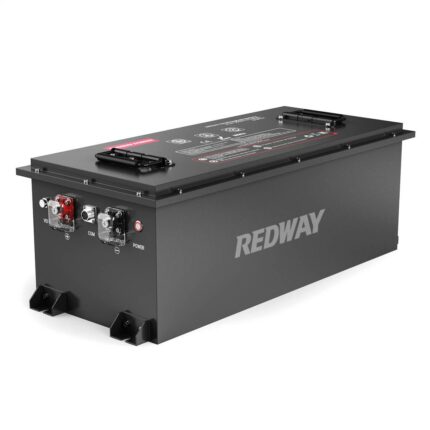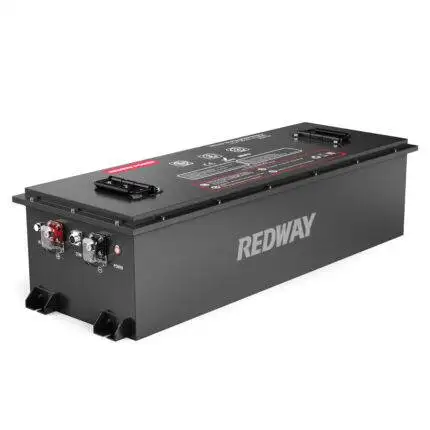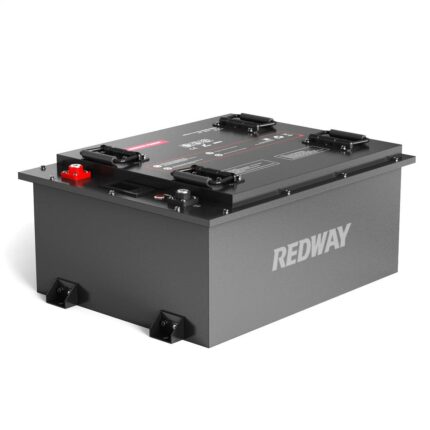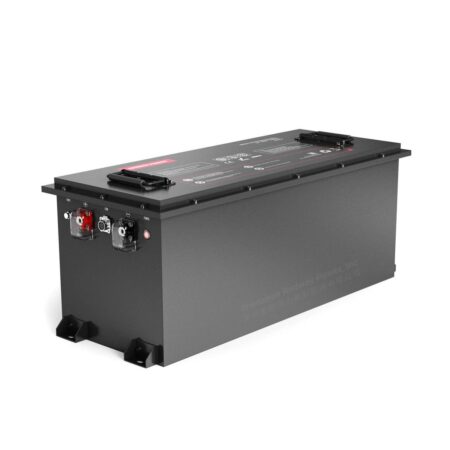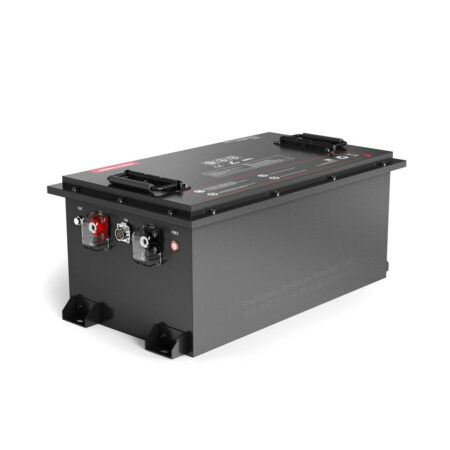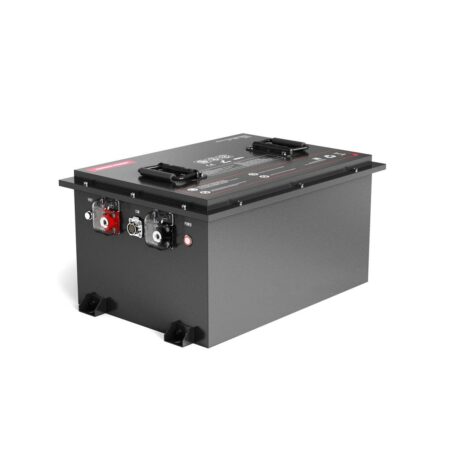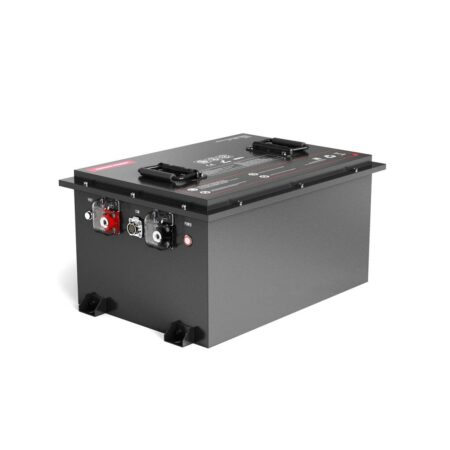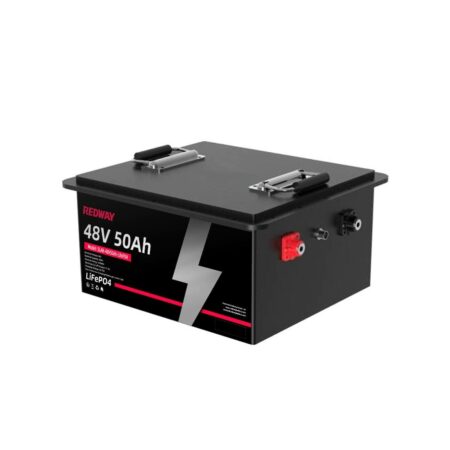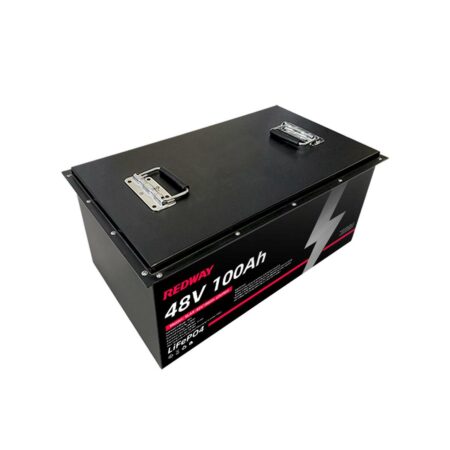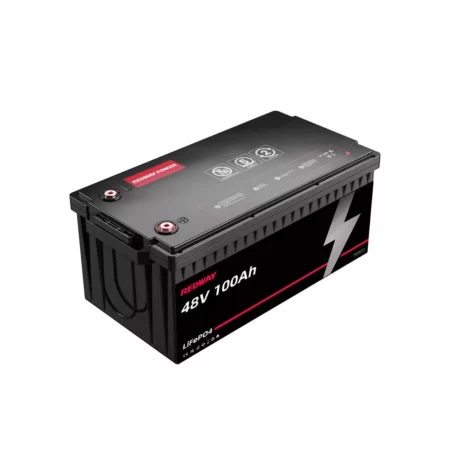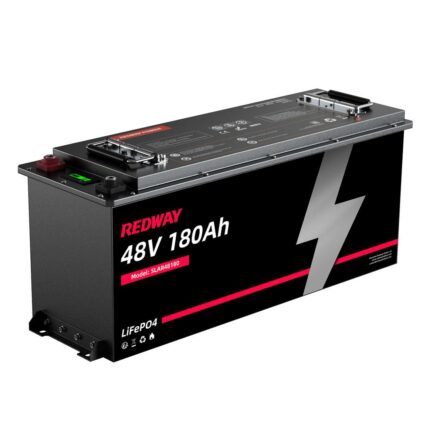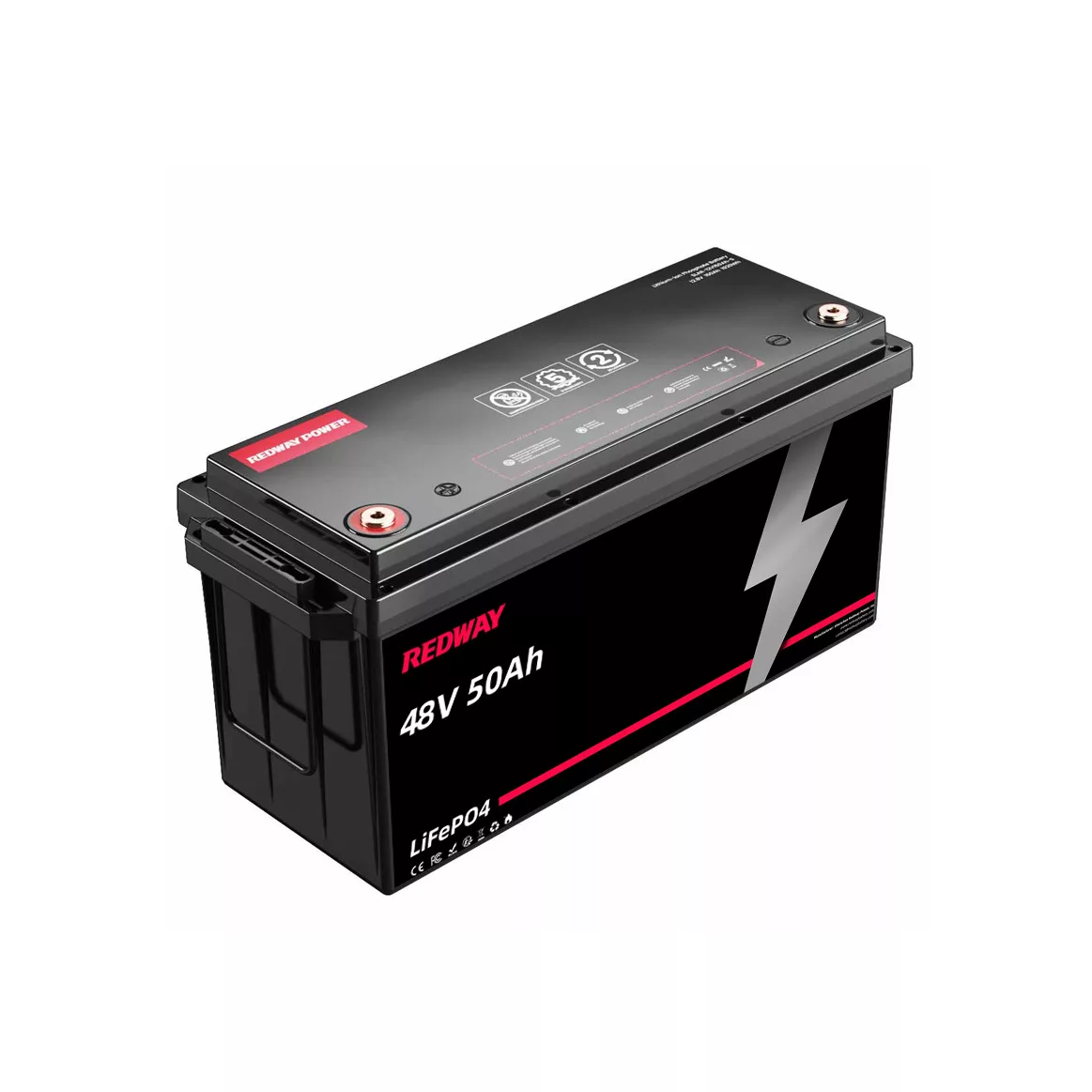48V LiFePO4 Batteries
- Server Rack Battery10 products
- Telecom Battery2 products
- Golf Cart Battery19 products
- 12V LiFePO4 Batteries17 products
- 24V LiFePO4 Batteries5 products
- 36V LiFePO4 Batteries5 products
- 48V LiFePO4 Batteries14 products
- 60V LiFePO4 Batteries3 products
- 72V LiFePO4 Batteries6 products
- E-Bike Battery1 product
- All-in-One Home ESS1 product
- Power Storage Wall5 products
- High Voltage Server Rack Battery / System1 product
- Portable Power Stations0 products
- Power Bank1 product
- Hot10 products
- 21700 cell1 product
Redway is a professional 48V LiFePO4 battery OEM manufacturer wholesaler, with 200Ah and 50Ah capacity options for your diverse needs. The OEM 48V LiFePO4 Batteries by Redway are half the weight, twice the power, and 5X longer lifespan than traditional batteries, ideal for RVs, sightseeing carts, marine, scooters, tricycles, emergency lighting, and security systems. Besides reliability, safety, long life, and top performance in extreme temperatures, Redway customizes lithium batteries for OEMs.
Showing all 14 results
FAQs▾
How Long Does a 48V LiFePO4 Battery Last?
A 48V LiFePO4 battery can last for approximately 3,000-5,000 full discharge cycles under normal operating conditions, equivalent to 8-14 years if cycled daily. Factors such as depth of discharge, operating temperature, charge/discharge rate, frequency of cycling, and preventive maintenance affect the actual lifespan. To maximize the battery's lifespan, avoid excessive discharge depths, maintain a temperature below 77°F, use temperature-compensated charging, keep the battery properly ventilated and dust-free, regularly test battery health, and follow the manufacturer's maintenance recommendations. With proper care, a 48V LiFePO4 battery can serve reliably for over a decade.
What is the UL 1642 Standard for 48V Batteries?
The UL 1642 standard is a safety standard for 48V batteries, specifically lithium batteries. It covers both primary (non-rechargeable) and secondary (rechargeable) lithium batteries that contain metallic lithium, lithium alloy, or lithium-ion. The standard aims to reduce the risk of fire or explosion when lithium batteries are used in a product and to minimize the risk of injury when user-replaceable lithium batteries are removed and discarded. It sets requirements for the maximum amount of metallic lithium allowed in the batteries and ensures compliance with safety guidelines.
How Do 14500 Cells Compare to AA for 48V Use?
14500 batteries and AA batteries are similar in size but differ in chemistry, voltage, capacity, performance, cost, and lifespan. 14500 batteries, with a voltage of 3.7 volts, are rechargeable lithium-ion batteries commonly used in small electronic devices. AA batteries, with a voltage of 1.5 volts, are disposable batteries used in low-power devices. AA batteries have a higher capacity and longer lifespan, while 14500 batteries offer higher performance and are rechargeable. Consider your device's energy demands, availability, and budget when choosing between 14500 and AA batteries.
Why Choose 48V LiFePO4 for Golf Carts?
48V LiFePO4 batteries are the ideal choice for golf carts due to their exceptional safety, stability, and performance. These batteries offer high safety performance, with stable cathode material and minimal risk of overheating or decomposition. With a long lifespan of thousands of charging cycles, they outlast traditional lead-acid batteries. 48V LiFePO4 batteries also exhibit excellent high-temperature resistance, ensuring reliable performance even in hot weather. Their large capacity, lightweight design, and eco-friendly nature make them a superior choice for powering golf carts, providing extended runtime, improved efficiency, and peace of mind.
Understanding the IEC 62133 Safety for 48V Batteries
Understanding the IEC 62133 safety standard is essential for ensuring the safe use of 48V batteries. This international standard sets specific safety requirements that manufacturers must comply with to minimize the risk of accidents, such as thermal runaway, fire, or explosion. It defines testing criteria to evaluate the battery's resistance to mechanical and electrical abuse, as well as its performance during charging, discharging, and storage. Compliance with the IEC 62133 standard ensures the safety and reliability of lithium-ion batteries used in consumer electronics and other devices.
How Does UL2054 Differ from IEC 62133 for 48V?
What Are the Benefits of 48V LiFePO4 Over Lead-Acid?
48V LiFePO4 batteries offer numerous benefits over lead-acid batteries. These batteries have a longer lifespan, lasting up to ten times longer than lead-acid batteries. They maintain structural integrity and performance in various environmental conditions, reducing the need for frequent replacements. With an extended cycle life of thousands of charge cycles, 48V LiFePO4 batteries provide reliable power for a wide range of applications. They are also safer to operate, more efficient, and environmentally friendly. Choose 48V LiFePO4 batteries for durability, reliability, and superior performance over traditional lead-acid batteries.
How to Charge a 48V LiFePO4 Battery Properly?
To charge a 48V LiFePO4 battery properly, follow these steps: 1) Choose a charger specifically designed for LiFePO4 batteries with the right voltage and current ratings. 2) Check the battery's status and ensure it's not deeply discharged. 3) Control the charging current and time to avoid overcharging. 4) Monitor the charging process, keeping an eye on voltage and temperature. 5) Disconnect the charger when the battery reaches around 90-95% capacity. Following these steps ensures safe and efficient charging of your 48V LiFePO4 battery.
What is the Warranty for 48V LiFePO4 Batteries?
48V LiFePO4 batteries typically come with warranties ranging from 5 to 10 years. For example, some models offer a 10-year warranty, ensuring the battery's performance and functionality. The warranty period provides peace of mind to customers, guaranteeing that the battery is free from defects and will perform as expected. It is important to check the specific warranty terms and conditions provided by the manufacturer for coverage details.
How to Maintain 48V LiFePO4 Batteries for Longevity?
To maintain 48V LiFePO4 batteries for longevity, follow these tips: 1) Choose the best battery based on capacity, voltage, reputation, and warranty. 2) Regularly inspect and clean the battery for optimal performance. 3) Monitor battery health, state of charge, and state of health. 4) Optimize charge and discharge cycles, avoiding deep discharges and extreme temperatures. 5) Ensure proper ventilation, temperature control, and firmware/software updates. By following these practices, you can extend the lifespan of your 48V LiFePO4 batteries and maximize their performance for years to come.


